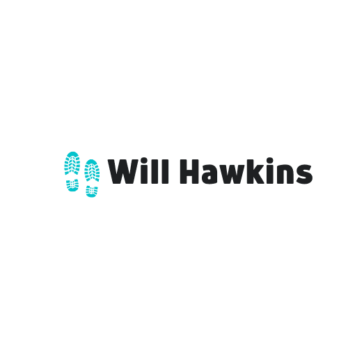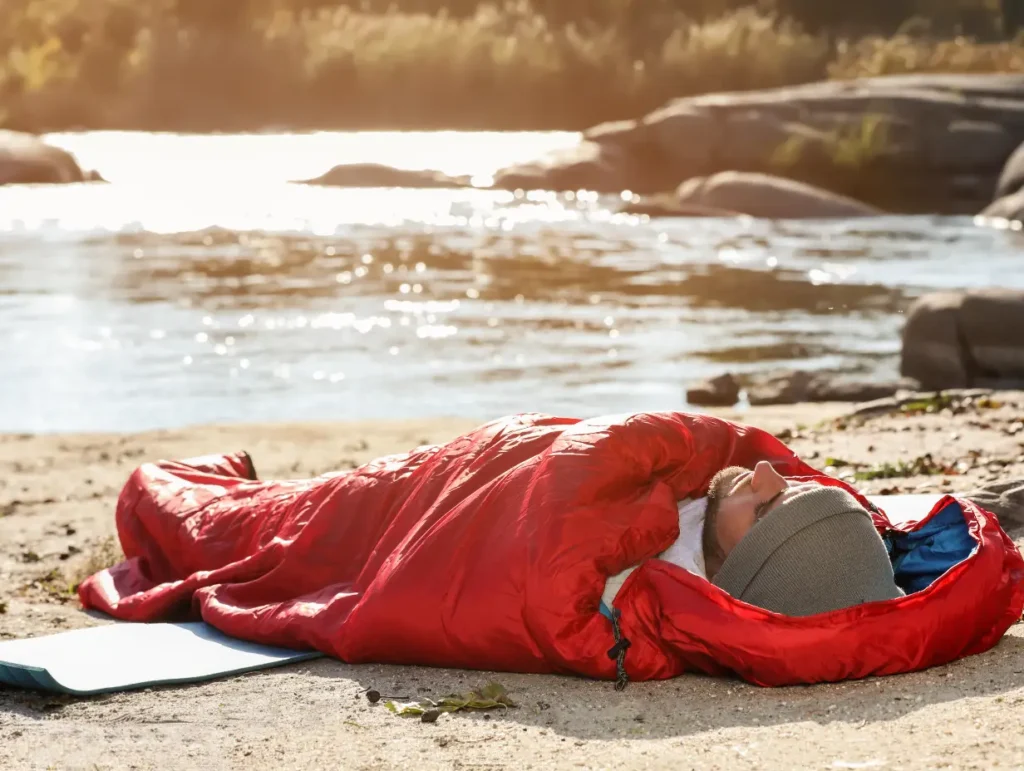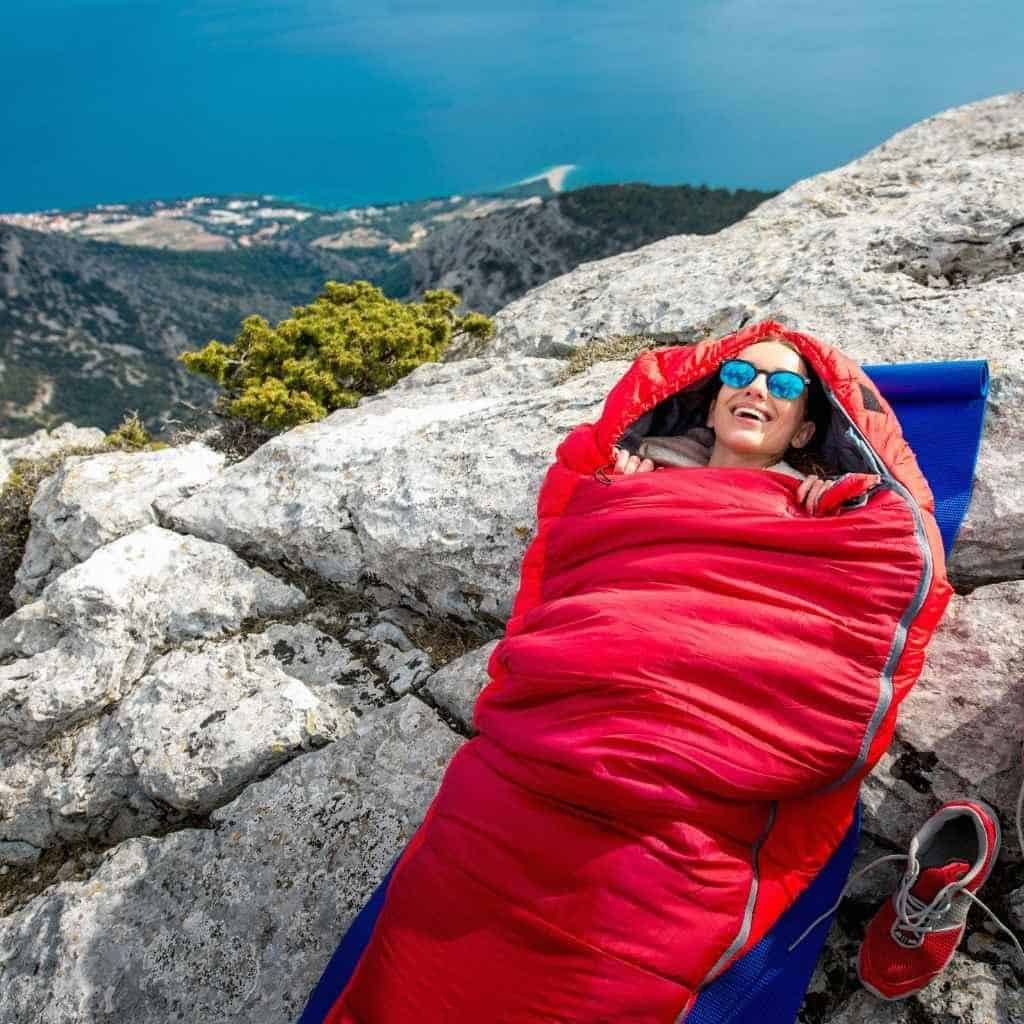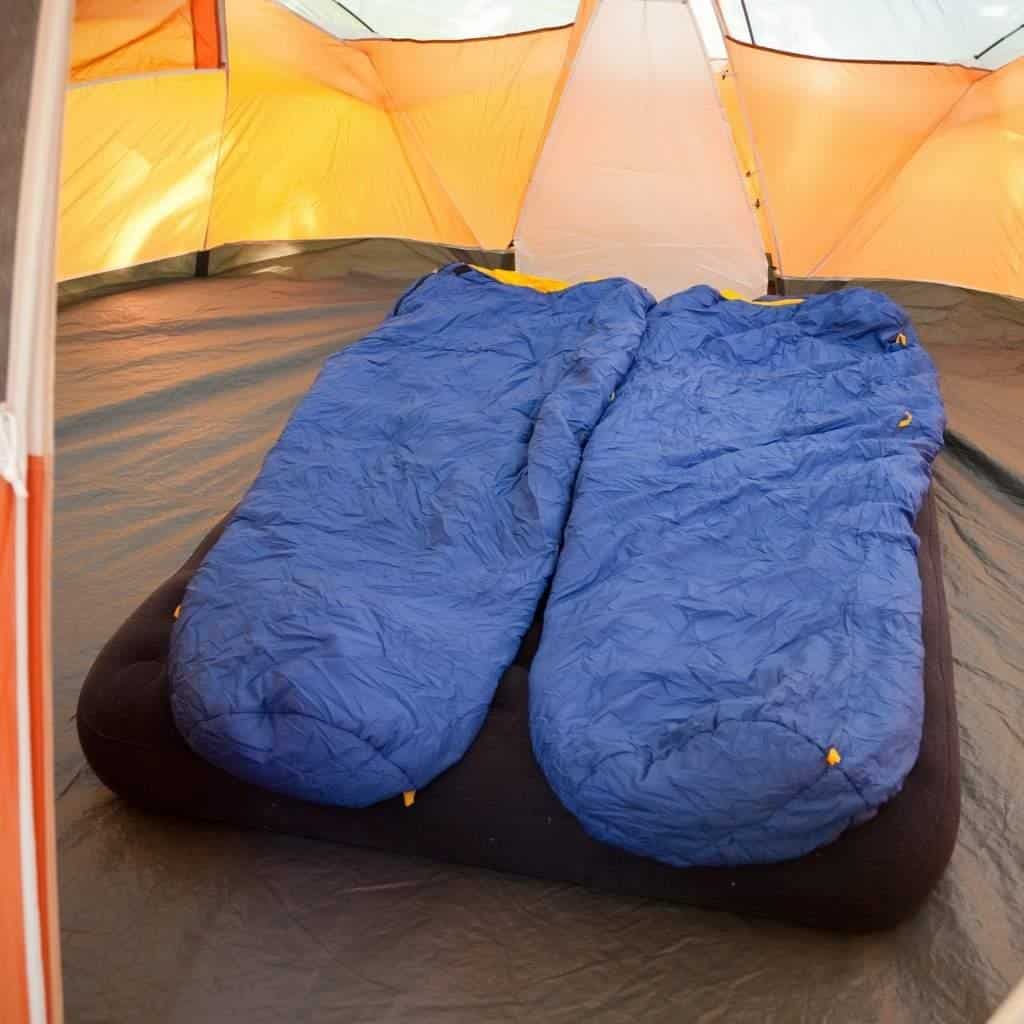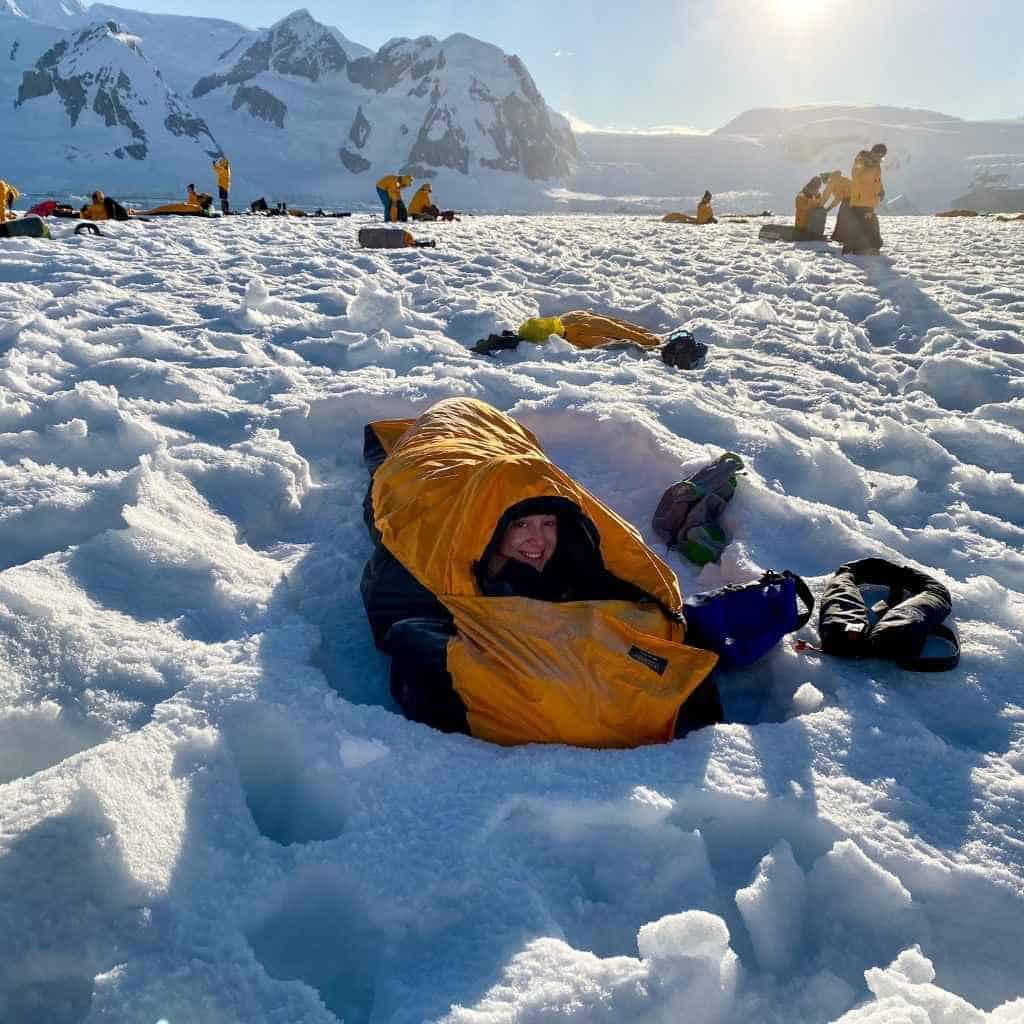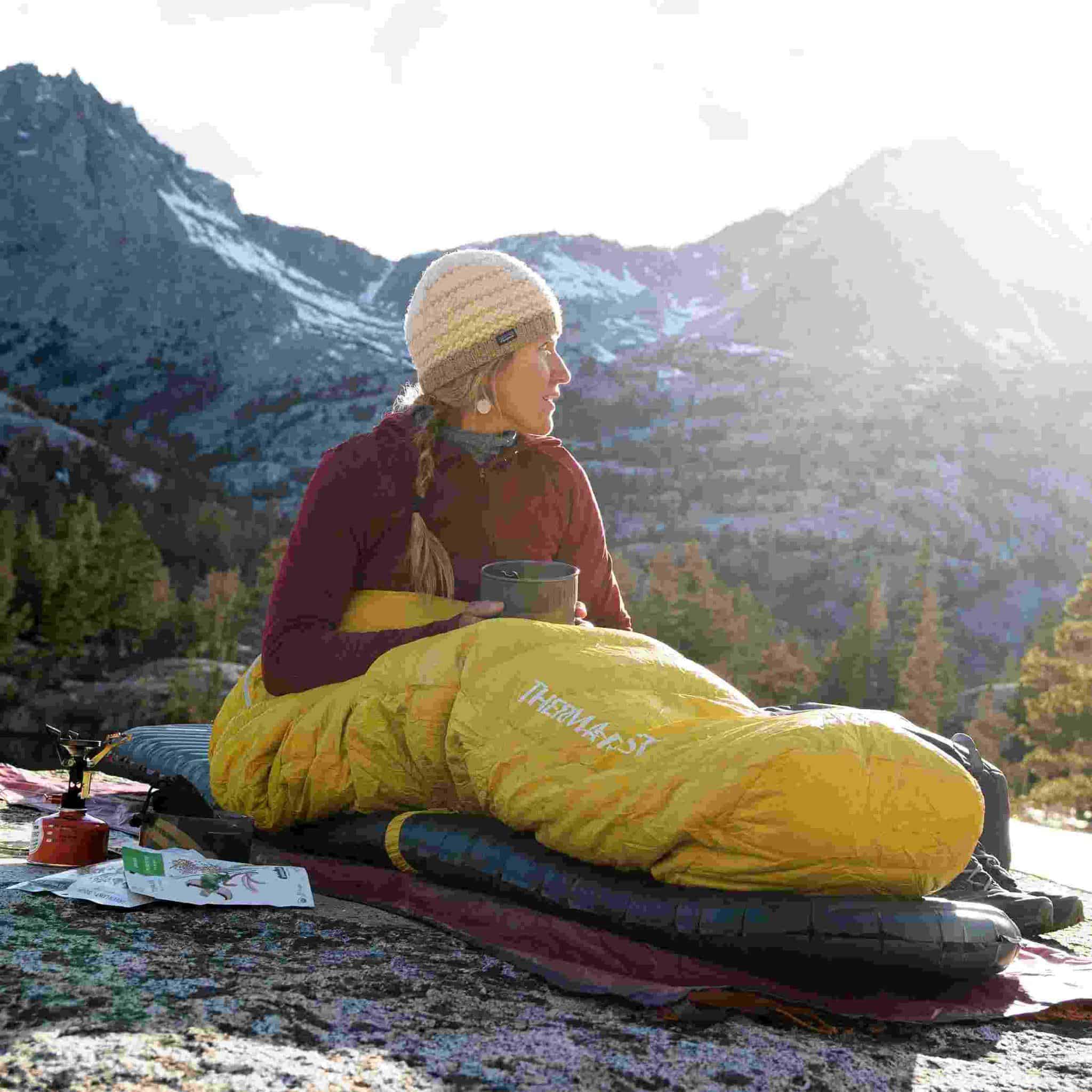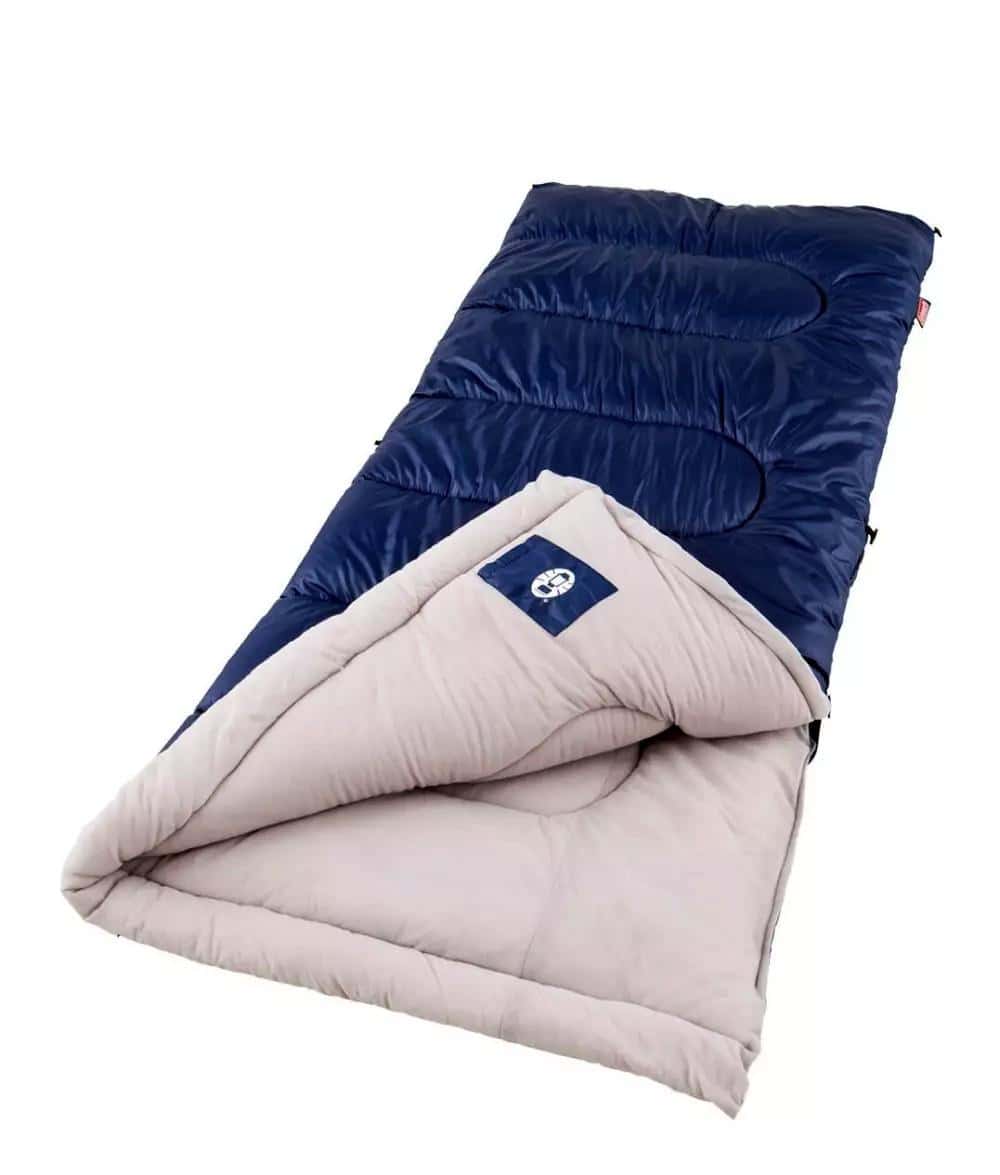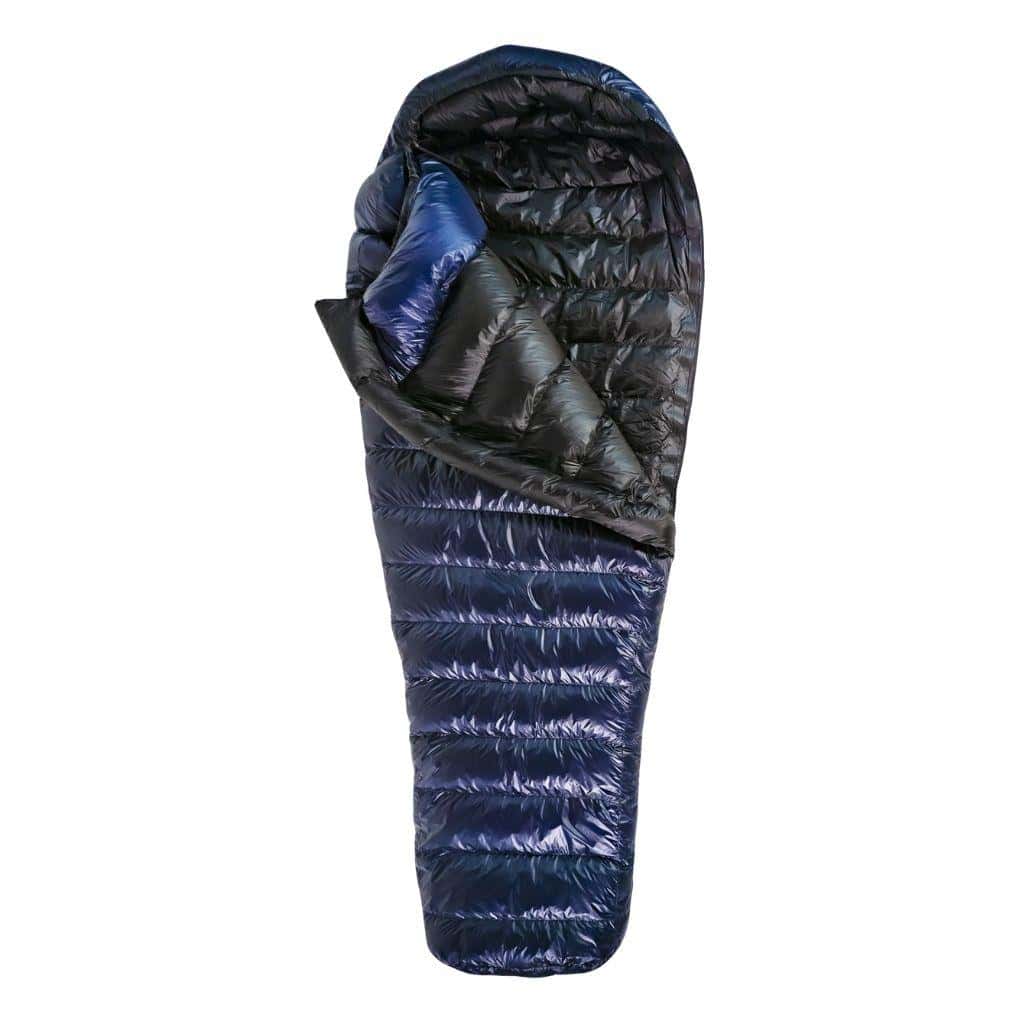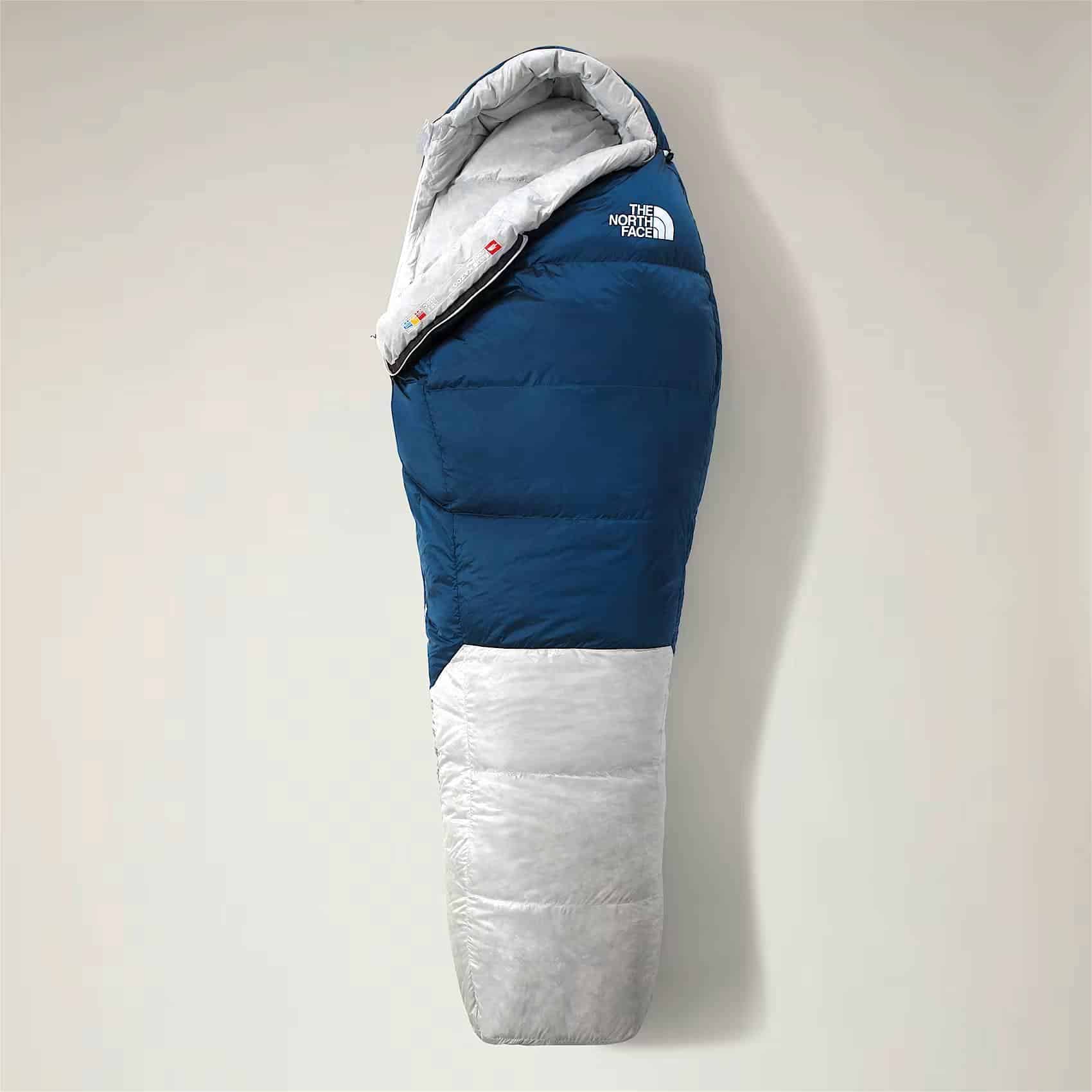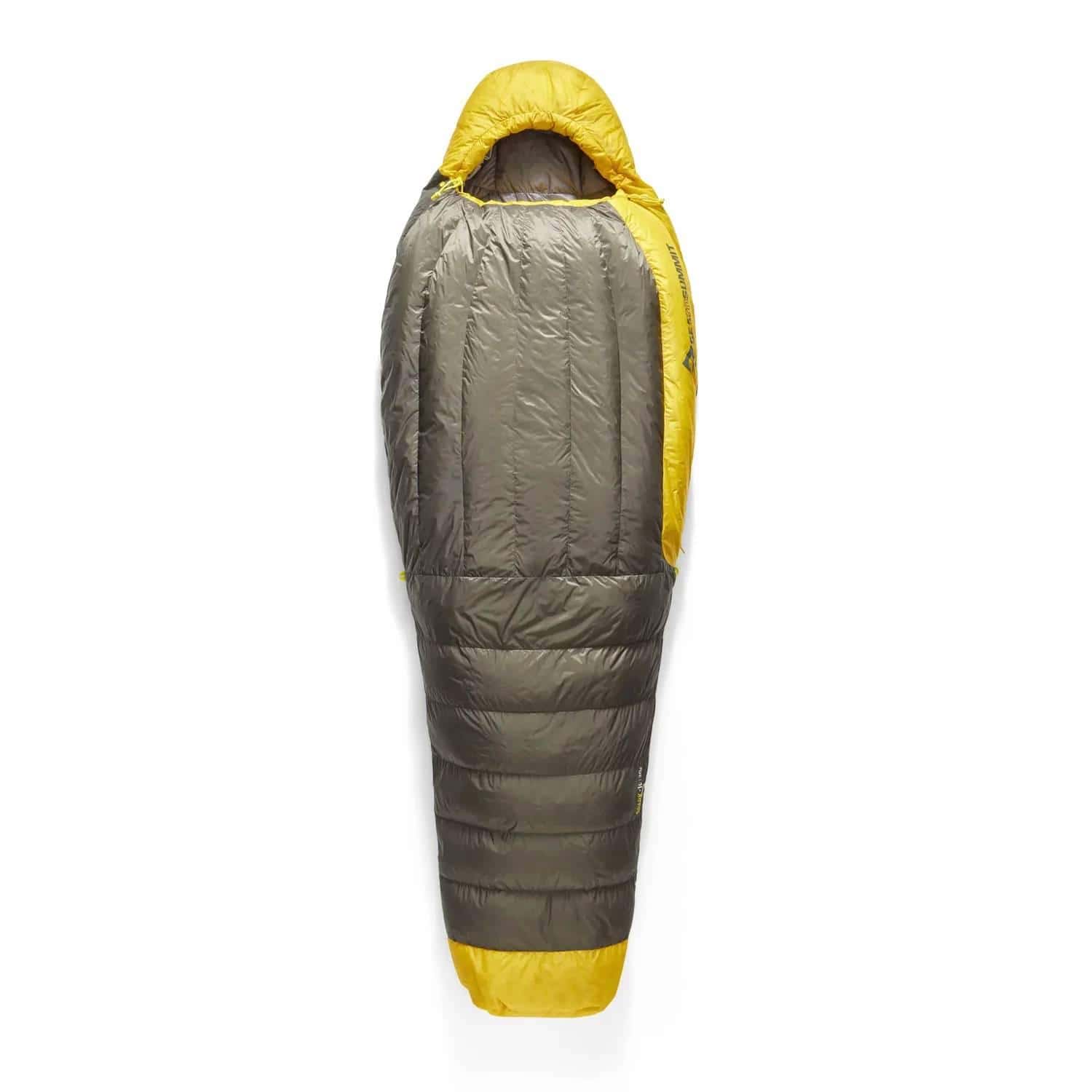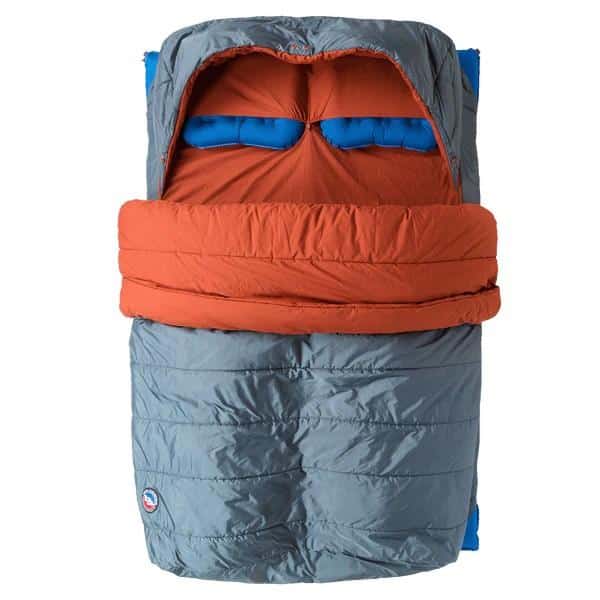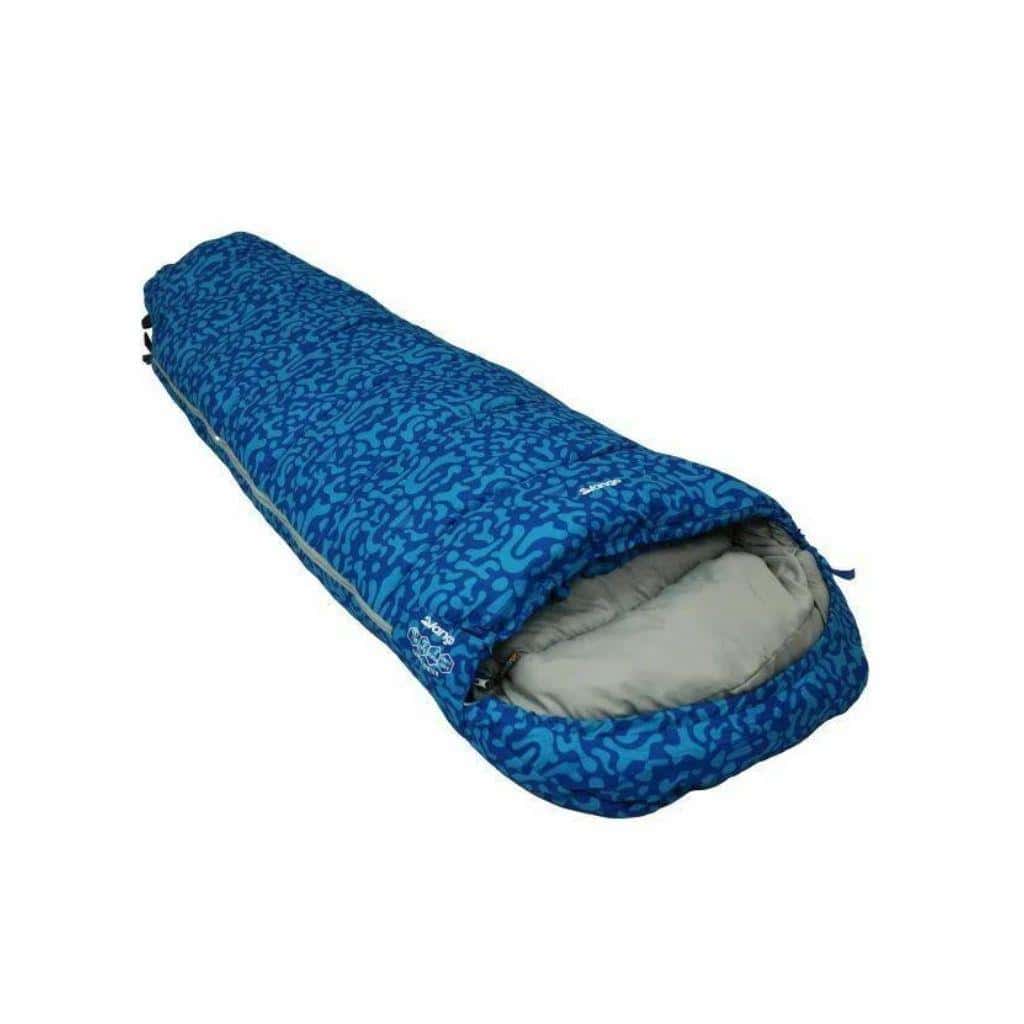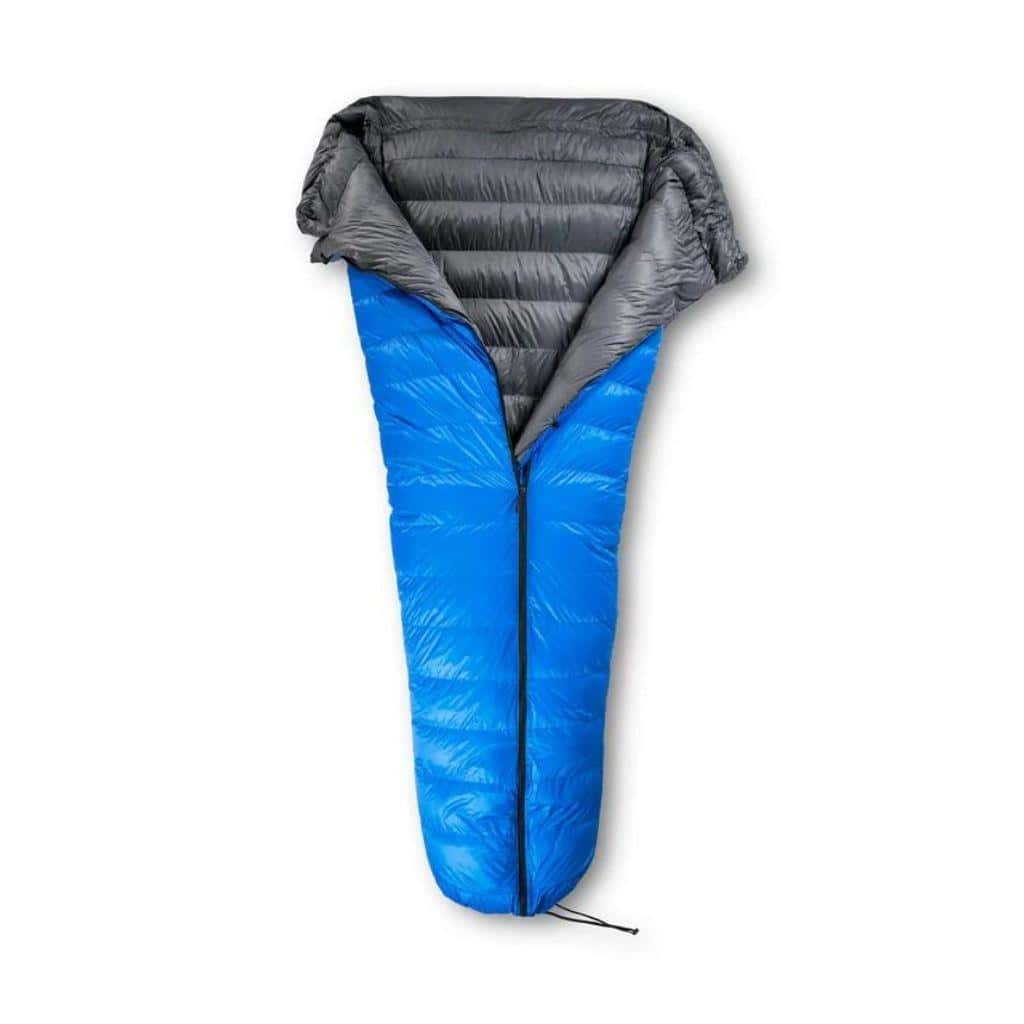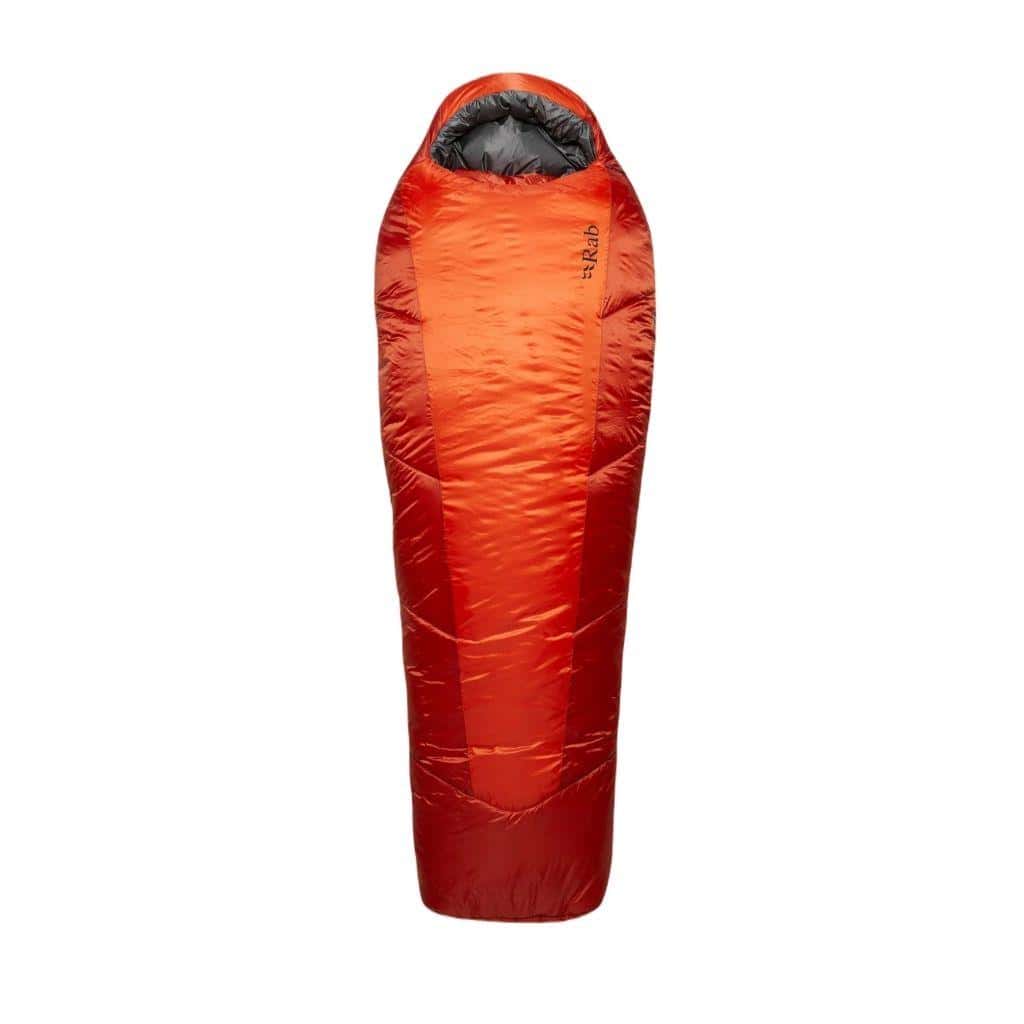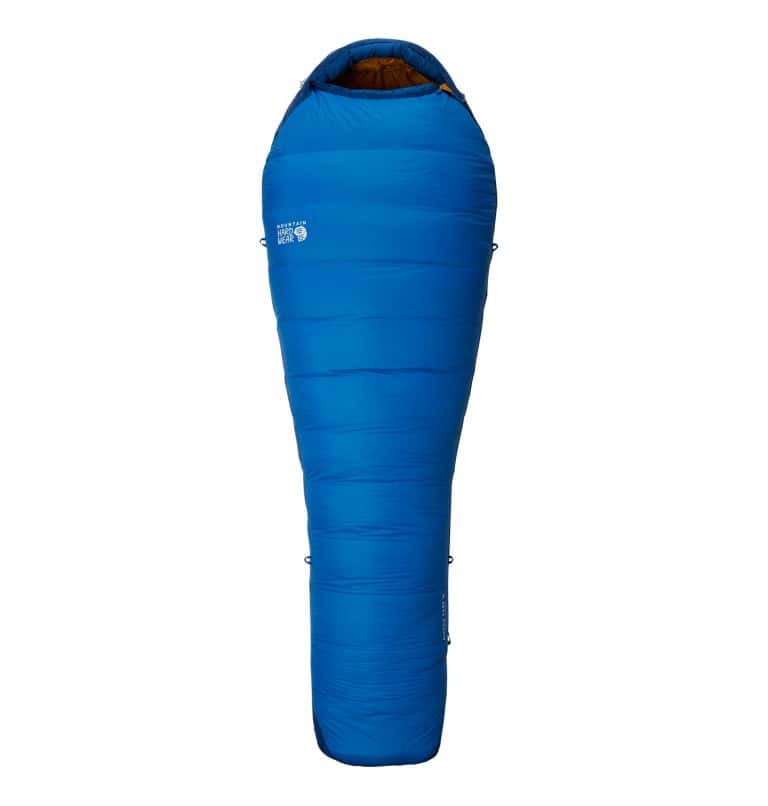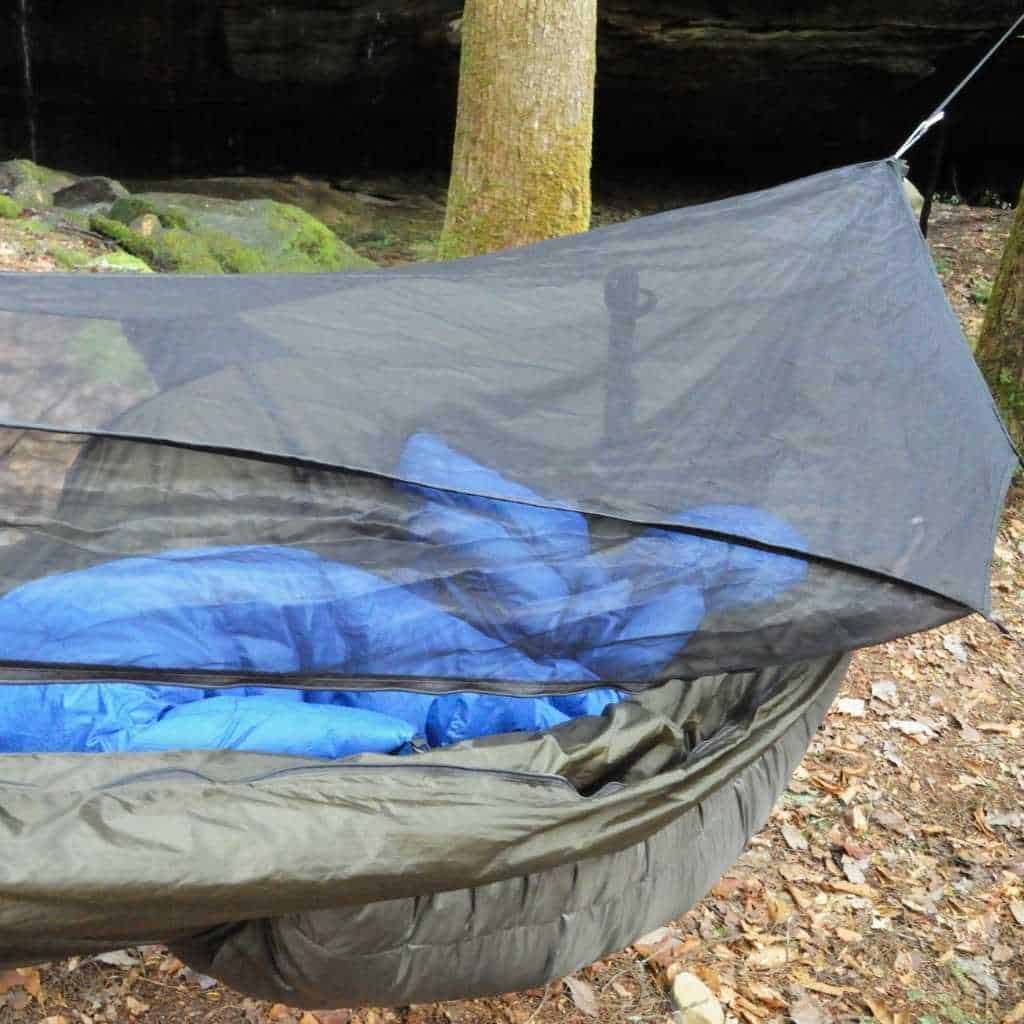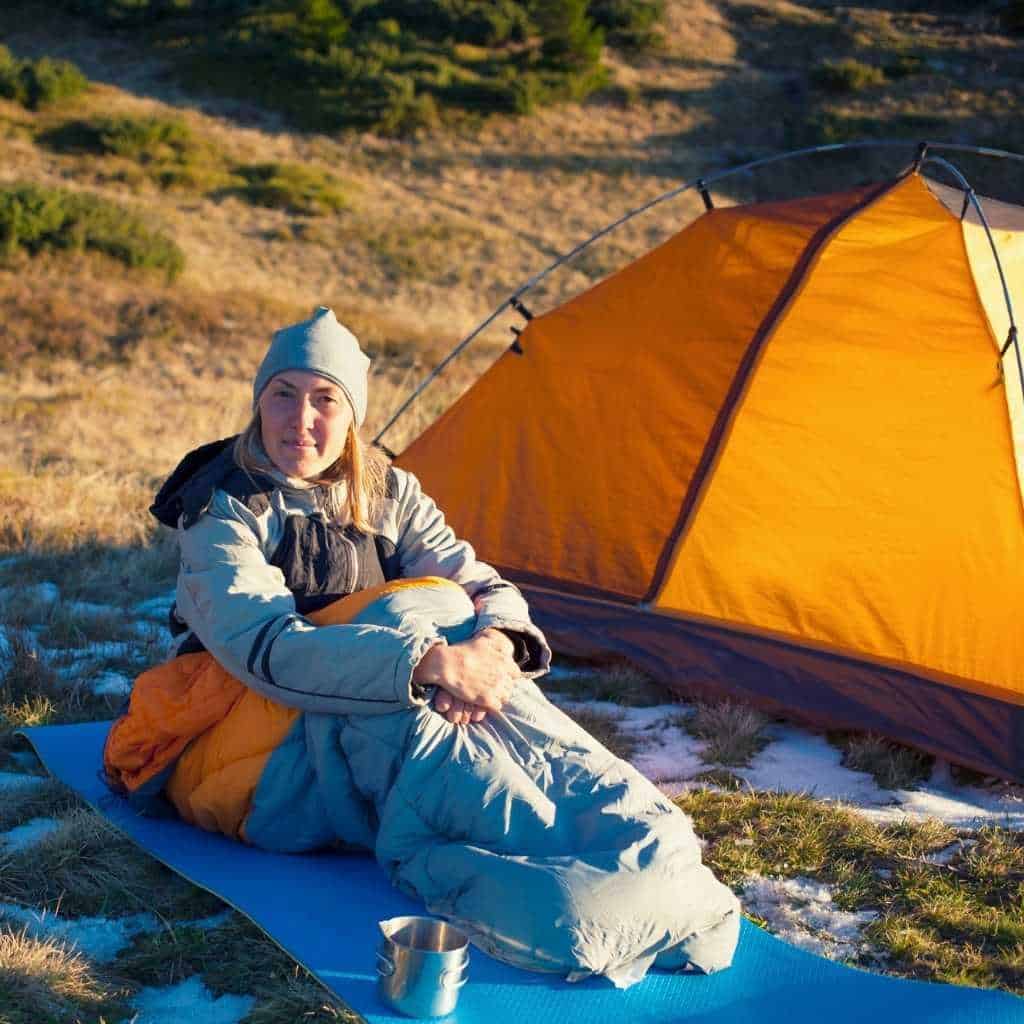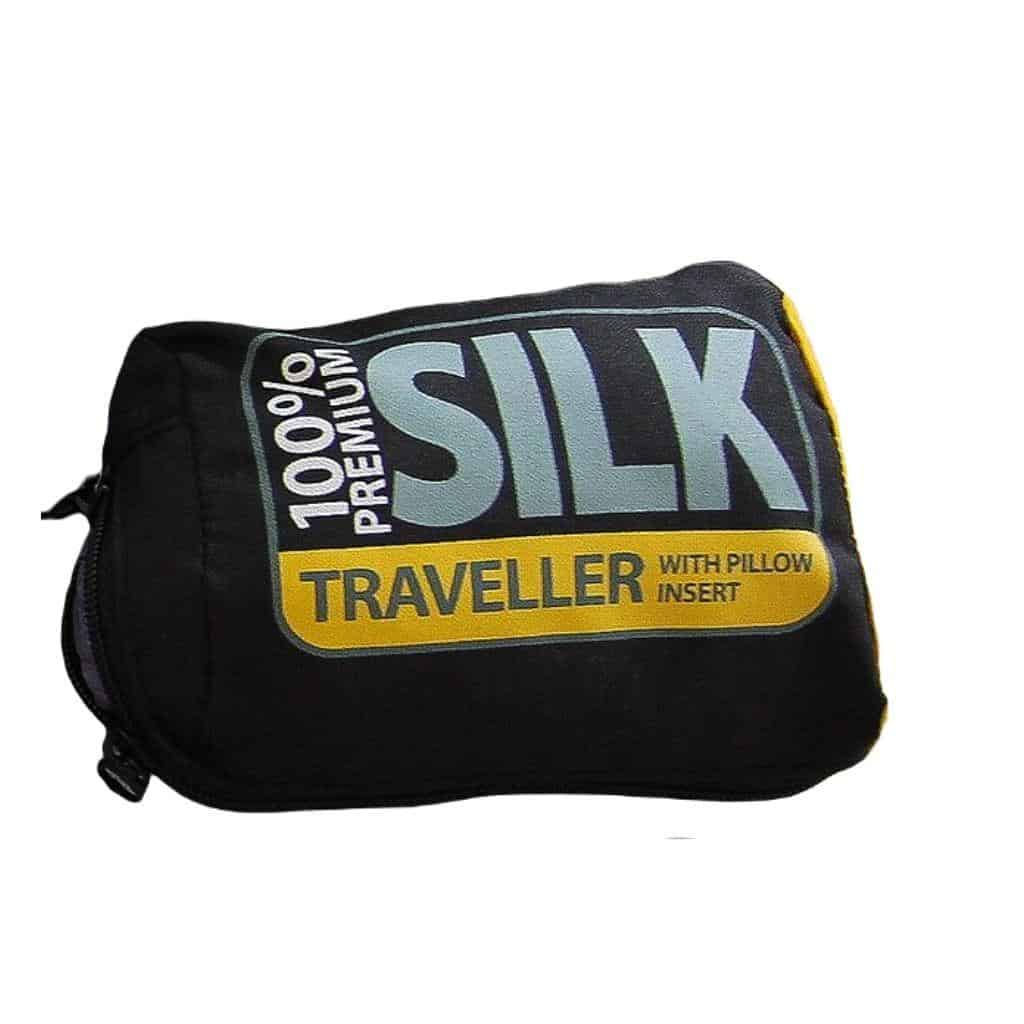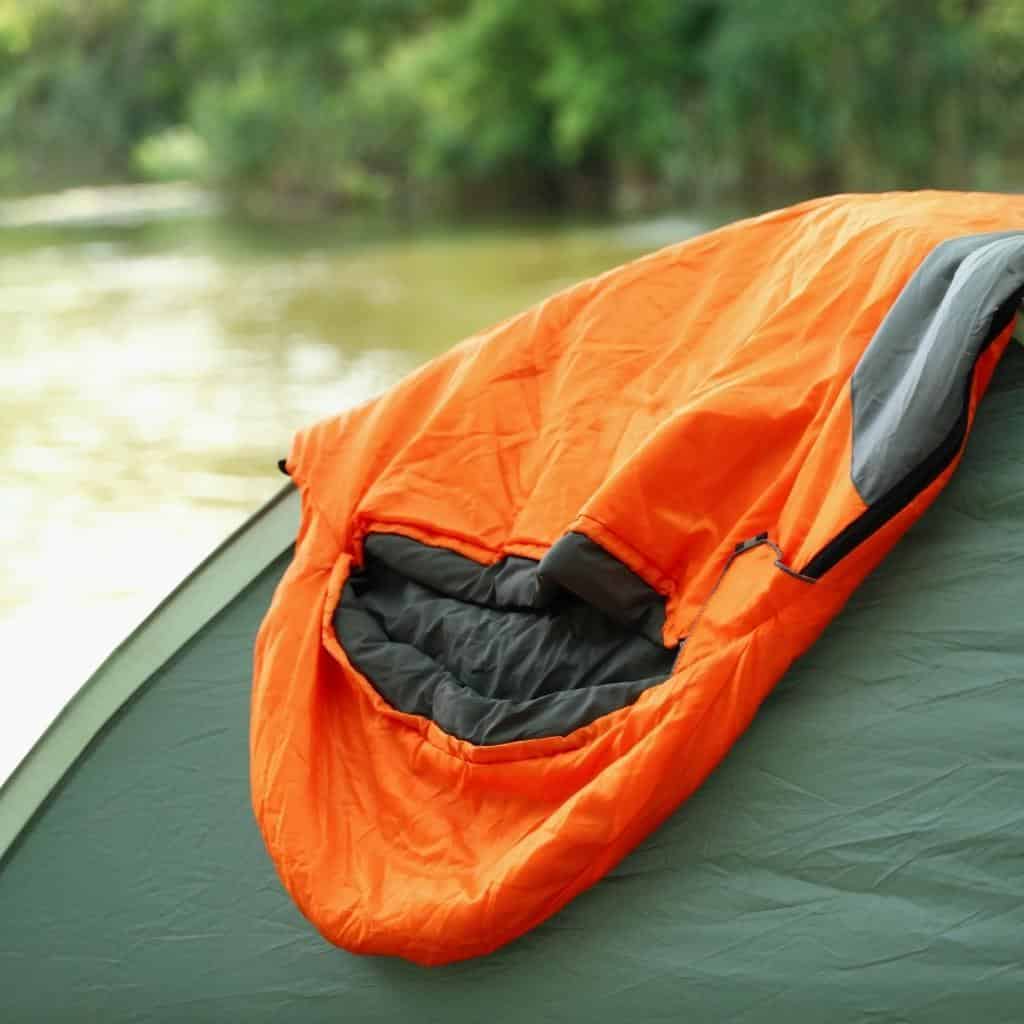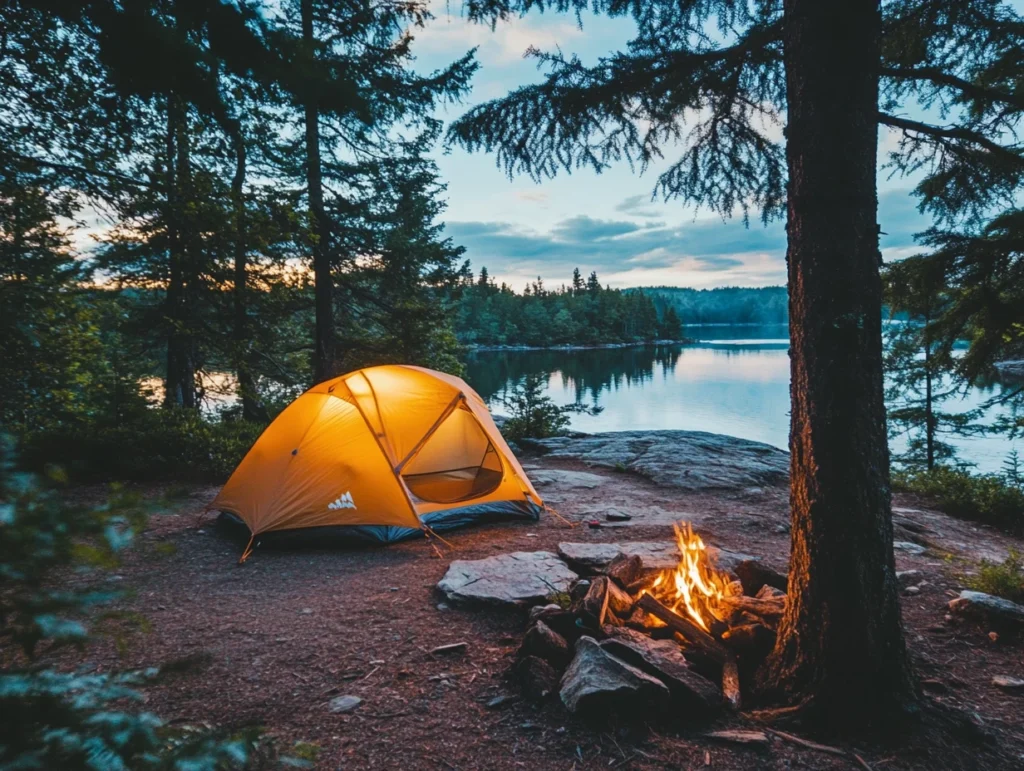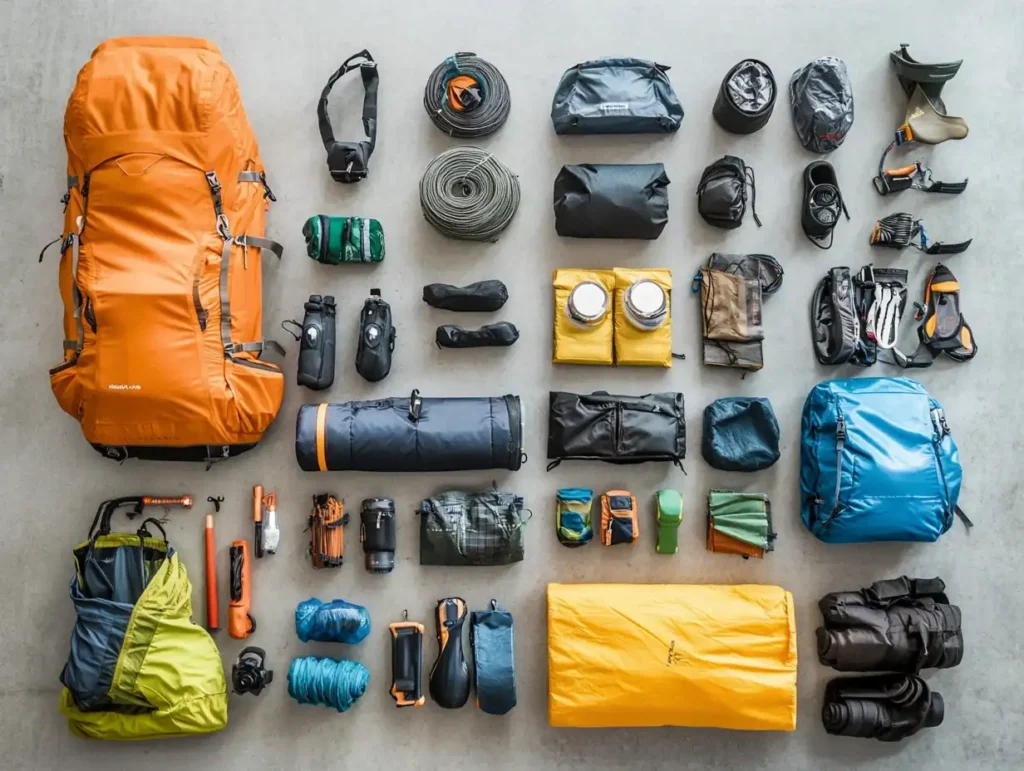So, you’re off on a camping trip and let me tell you, a good night’s kip isn’t something you want to skimp on. For those looking for a versatile option, the Sierra Designs range stands out, with features like water resistance and responsibly sourced material.
Want to get straight in? Click on the links below to get to what interests you most:
Understanding Sleeping Bag Basics
How I Tested the Sleeping Bags
Top 10 Sleeping Bags for Camping in 2024
How to Choose the Right Sleeping Bag for You
Comparing Sleeping Bags to Alternative Camping Sleep Systems
Adapting Your Sleeping Bag for Different Climates
Budget-Friendly Tips for Upgrading Your Sleep System
Safety Considerations for Sleeping Bag Use
Sleeping Bag Accessories to Jazz Up Your Camping Trip
So, you’re off on a camping trip and let me tell you, a good night’s kip isn’t something you want to skimp on. For those looking for a versatile option, the Sierra Designs range stands out, with features like water resistance and responsibly sourced material.
Choosing the right sleeping bag for camping is a big piece of the puzzle. I’ve been out in the wild more times than I can count—evenings that felt like I might melt into the earth or freeze my toes off.
Snoozing under the stars is all well and good, but to soak in the beauty around you, you’ve got to sleep like a baby. Whether you’re snuggled up under towering trees, gazing into the cosmic vacuum, or wrestling with the howling winds on a mountainside, the right bag is your trusty sidekick.
So, let me walk you through my nocturnal adventures and my trials and triumphs in the ever-challenging quest for the best sleeping bag.
Whether you’re testing out the snug fit of the Siesta Hooded 20 or another camping favourite, comfort is key.
Now, I’ve tried all sorts—from featherlight champions that hug you snug in your tent to the fluffiest ones perfect for car camping. I’ve checked out features and price tags to make sure everyone’s covered, rich, or frugal.
Here, I’ve lined up my favourites for 2024. My aim? Everyone leaves happy, whether you’re a spare-no-expense kind of person or looking for a steal.
I’ve put them through their paces, considering everything from warmth to weight, squeezing them in a rucksack, and making sure they’re tough enough.
For those curious minds out there, wanting to dig deeper into what to look for in a sleeping bag or hunting down the perfect lightweight option, this guide is packed with comparisons and tips you can use.
I’ll even throw in a few gems about how to make your sleeping bag work in various climates, how to keep it nice and neat, plus little extras that jazz up your camping escapades.
Whether you’re a seasoned pro or just ordering your first set of thermal socks, this guide is your buddy in finding the best sleeping bags for camping.
So come along, as I spill the beans on how to catch those Zs and live it up in the great outdoors.
Understanding Sleeping Bag Basics
So, you’re gearing up for some camping fun under the stars, huh? Picking out the best camping sleeping bag can be the difference between snoozing soundly and counting sheep all night. Here’s the lowdown on what you need to know when it comes to sleeping bags.
Types of Sleeping Bags
Sleeping bags aren’t one-size-fits-all. They come in all shapes and sizes, each suited for various camping styles. Here’s the skinny:
- Rectangular: These are your roomy pals, offering space galore—perfect if being squished isn’t your jam. Best if you’re car camping with comfort as priority number one.
- Mummy: Snug like a bug, these cut down on weight and pack heat better for backpacking adventures.
- Double: Meant for lovebirds or besties who’d rather not sleep alone, saving room compared to lugging around two separate sacks. For the scoop on couples’ sleeping bags, peep our article on best double sleeping bags for camping.
| Sleeping Bag Type | Good Stuff | Best For |
|---|---|---|
| Rectangular | Roomy, cosy | Easy car camping |
| Mummy/Tapered | Snug, light | Trekking the trails |
| Double | Extra space for two | Romantic (or friendly) duos |
Insulation Types
How your sleeping bag keeps you warm matters. Here’s the lowdown:
- Down Insulation: This one’s from our feathery friends, light as a feather yet toasty. Packs small and is killer for most weather, though not the best in soggy situations (Chris Waldron). Many modern sleeping bags, such as those from Sierra Designs, adhere to the Responsible Down Standard, ensuring ethical sourcing while keeping you warm
- Synthetic Insulation: Bulkier but thrives in wet weather, plus dries quick. Wallet-friendly, too.
| Insulation Type | Pros | Cons |
|---|---|---|
| Down | Featherlight, packs small, warm | Wetsuit when wet, hits the wallet harder |
| Synthetic | Great when drenched, easy on the budget | Takes up more room, weighs more |
Temperature Ratings
Decoding those temp ratings is key to snagging the best sleeping bag for camping. These figures, especially the EN13537 ones, let you know just how much warmth you can expect. Like in the winter, aim for something with a comfort rating below freezing (Chris Waldron).
| Weather | Comfort Rating |
|---|---|
| Summer | Above 32°F (0°C) |
| Autumn/Spring | 10°F to 32°F (-12°C to 0°C) |
| Winter | Below 10°F (-12°C) |
Weight and Packability
Unless you’ve got superhuman strength, you probably care about weight and how much room the bag takes up in your pack. Lighter, tapered designs are best for backpacking. But remember, synthetic ones take up more space than down versions.
Check out our write-up on the best lightweight camping sleeping bags for easy-to-carry options ideal for backpacking.
Final Considerations
When on the hunt for the best sleeping bag for wild camping, keep an eye on these things:
- Size and Fit: Make sure it fits your body and gives you wiggle room.
- Durability: Look for strong zippers, strong stitching, and good material to handle Mother Nature’s surprises. Another key factor is the outer shell material, which can offer vital water resistance to keep you dry in damp conditions.
- Extra Features: Neat bonuses like hoods, draft collars, and pockets can make a big difference.
Armed with this trusty info, you’re all set to find the best sleeping bags for camping that suit your needs like a glove. For more tips and juicy insights, wander through our other guides and reviews.
How I Tested the Sleeping Bags
Testing sleeping bags isn’t just about ticking boxes; it’s a personal mission, with a sprinkle of snooze-time fun, and a dash of grit. Here’s the lowdown on how I got to grips with what makes a great sleeping bag.
Criteria for Testing
When putting these sleeping bags through the wringer, I eyeballed a few main things:
- Comfort: Gave them a spin in different spots and positions to see if they felt like a hug or a torture device.
- Warmth: Checked how toasty they kept me when it was chilly, using those shiny EN/ISO standards if they were handy.
- Weight and Packability: Crucial for those of us with weak arms (aka backpackers). I weighed them and tried stuffing them into bags like a magician.
- Durability: Took them on quite a few romps to see if they’d fall apart or stick around.
- Features: Zoomed in on extras like snazzy hoods, stubborn zippers, and little tricks that made me sigh with relief.
Testing Environment
I wanted these bags to handle any camping shenanigans, so I tossed them into all kinds of settings:
- Mountains in Winter: To check if they laughed in the face of frostbite.
- Beach in Summer: To see if they kept their cool when I didn’t.
- Forests and Meadows: To test if they were adaptable like a chameleon.
Comfort and Warmth
I cosied up in each bag and noted if I felt snug or like I was wrapped in a nightmare. Thermal tests were a mix of my gut feeling and some gadgetry checking the heat-keeping skills.
Though EN/ISO ratings gave a starting point, sometimes the numbers didn’t feel quite right. Premium down insulation usually nailed it; it folded down small and kept me warmer than a campfire.
Weight and Packability
I put each bag on a diet scale, noting those numbers—super important for lugging around in the wild. Here’s a summary:
| Sleeping Bag | Weight | Packed Size (litres) |
|---|---|---|
| Feathered Friends Flicker UL | 238 g/8.4 oz | 8 |
| Sea to Summit Spark I 5C | 0.85 lb/ 387 g | 8 |
| Big Agnes Dream Island 20 | 7 lbs/3.1 kg | 12” x 22” |
Checking luggage is boring, but this table is your cheat sheet. Tapered designs were often the bee’s knees for traveling light, backed by Switchback Travel.
Durability
I yanked and dragged each bag across rough terrains, stuffed, unstuffed, and tested them thoroughly during my adventures. I wanted to see if they’d survive or crumble into sad fabric bits.
Features
Sometimes, the little things make you love a bag:
- Hood Design: Cosy, snug, adjustable for when the temps drop.
- Zippers: Smooth as butter, didn’t snag or make me curse at them.
- Interior Pockets: Handy for little things, avoiding that ‘stuff-splosion’ in your tent.
Real-world Adjustments
Every trip is different, so I thought about weather, clothing mistakes, and how hard or soft the ground was. I used REI’s smarts to help me plan.
From testing in the field to scratching my head over specs, I mapped out what makes the best sleeping bag for camping. If you’re about to take the plunge into sleeping under the stars, my findings are all laid out in the Top 10 Sleeping Bags for Camping in 2024. Happy camping!
Top 10 Sleeping Bags for Camping in 2024
1. Best Camping Sleeping Bag Overall: ThermaRest Parsec -6C
This snuggly buddy here nails the balance of toasty warmth, easy weight, and durability that doesn’t quit. It’s like having your cake and eating it too, except it’s for s’mores nights under a billion stars.
With its fancy, sustainable down feathers, it stays warm and squishy, perfect for chilly nights. Its nerdy Comfort rating is so good you can go winter camping in it without turning into an icicle. It has a good balance in its warmth to weight ratio.
In short, this is the winner for its well-rounded performance and great for various conditions.
| Specification | Details |
|---|---|
| Insulation Type | Premium Down |
| Weight | 1lb 12oz/ 0.81kg (Regular size) |
| Temperature Rating | -6°C/20°F |
| Shape | Mummy |
2. Best Budget Option: Coleman Brazos
Wallet feeling a little light? No worries. This sleeping bag is your budget superhero, offering great features without emptying your pockets. The synthetic fluff inside keeps you warm for spring and summer outings. Your toastiness might just become the talk of the camp.
The Brazos is an affordable and reliable option for casual campers. Amazon Prize: £46.24
| Specification | Details |
|---|---|
| Insulation Type | Synthetic |
| Weight | 2.5kg |
| Temperature Rating | 1°C/40°F |
| Shape | Rectangular |
Want more goodies without splurging? Check out more pocket-friendly options here.
3. Best Sleeping Bag for Backpacking: Western Mountaineering MegaLite
Designed like a dream for the two-footed wanderers, this sleeping bag is all about being feather-light yet snug. That tapered look not only looks cool, but it cuts down on weight, squeezing it down to the size of a small cloud in your backpack.
The MegaLite is ultra-lightweight and highly compressible.
| Specification | Details |
|---|---|
| Insulation Type | Premium Down |
| Weight | 850 g |
| Temperature Rating | -2°C/30°F |
| Shape | Tapered |
Want to take a load off? You can find more lightweight sleeping bags here.
4. Best Sleeping Bag for Cold Weather: North Face Blue Kazoo
If you enjoy camping where penguins build their holiday nests, this sleeping bag won’t let you down. Keeping you warm and comfy even when the mercury really dips, it’s got your back in those arctic conditions. It’s ideal for hiking, ski touring, and mountaineering.
In other words, it’s excellent for extreme cold conditions.
| Specification | Details |
|---|---|
| Insulation Type | Down |
| Weight | 2.2lb/998g |
| Temperature Rating | -10°C |
| Shape | Mummy |
Looking at shivering nights ahead? Peek more cold weather options here.
5. Best Sleeping Bag for Summer Camping: Sea to Summit Spark I 5C
Camping in warm weather? This breezy bag is just right, hugging you without making you sweat buckets. Light as a feather yet snug enough for those mild summer nights.
The Spark is lightweight and perfect for warmer nights.
| Specification | Details |
|---|---|
| Insulation Type | Down |
| Weight | 0.85 lb/ 387 g |
| Temperature Rating | 7°C/45°F |
| Shape | Mummy |
For more sun-warmed picks, have a look here.
6. Best Double Sleeping Bag: Big Agnes Dream Island 20
Love’s in the air and in your sleeping bag. Perfect for snuggles, this double-bag wonder is all about both warmth and comfort for two. Don’t worry, it’s roomy enough for some pillow fight action too!
The Dream Island 20 is spacious and comfortable for two people.
| Specification | Details |
|---|---|
| Insulation Type | Synthetic |
| Weight | 7 lbs/3.1 kg |
| Temperature Rating | -6°C/20°F |
| Shape | Double |
For more cuddlier options, shimmy over here.
7. Best Sleeping Bag for Kids: Vango Kanto Junior
For your little explorers, this one’s just right in size and snugness, promising them warm and pleasant dreams. You’ll love seeing them cosy and ready to tackle another day of adventure.
The Kanto Junior is sized and insulated appropriately for children.
| Specification | Details |
|---|---|
| Insulation Type | Synthetic |
| Weight | 1.1kg |
| Temperature Rating | 8°C |
| Shape | Mummy |
Got a troop of youngsters? Explore more compact choices here.
8. Best Ultralight Sleeping Bag Option: Feathered Friends Flicker UL
Here’s your ultra-light miracle, perfected for those wanting to go on a long trek without a heavy load. Its tapered style doesn’t just look trim but lets you save on packing bulk too.
Summary: One of the lightest bags with excellent versatility.
| Specification | Details |
|---|---|
| Insulation Type | Premium Down |
| Weight | 238 g/8.4 oz |
| Temperature Rating | 4.4°C/45°F |
| Shape | Tapered |
Saving you precious weight, more feather-light pals are here.
9. Best Eco-Friendly Sleeping Bag: Rab Solar Eco 4
If you care for the planet as much as your comfort, this eco-friendly bag made from recycled stuff ticks both boxes. Sleep easy knowing you’re helping save the world, one snooze at a time.
The Solar Eco 4 is made from recycled materials with sustainability in mind.
| Specification | Details |
|---|---|
| Insulation Type | Recycled Synthetic |
| Weight | 1.47 kg/ 52oz (Regular) |
| Temperature Rating | -2°C/28°F |
| Shape | Tapered |
Look for more do-good choices here.
10. Best Value for Money Sleeping Bag: Mountain Hardwear Bishop Pass
This bag gets you sleeping like a baby without charging you for the moon and stars. It’s packed with smart features that make it a real winner for money-conscious campers.
The Bishop Pass is a great balance between price, performance, and durability.
| Specification | Details |
|---|---|
| Insulation Type | Synthetic |
| Weight | 1.06 kg/2 lb 5oz |
| Temperature Rating | -9°C/15°F |
| Shape | Mummy |
More bags that do the job on a budget? Find them here.
For more insights on picking the perfect sleeping bag to suit your camping needs, check out our guide on how to choose a sleeping bag for camping.
How to Choose the Right Sleeping Bag for You
Finding the right sleeping bag can really up your camping game. Let me share how I figured out which snug sack was my go-to for camping fun.
Temperature Ratings
First off, know your temps! Sleeping bags come with something called an EN13537 Comfort rating. It’s fancy talk for how chilly it can get before you’re freezing your socks off. If you’re braving the winter, look for ratings below zero. Brands like Feathered Friends and Western Mountaineering are spot-on when it comes to keeping things toasty.
Insulation Type: Synthetic vs. Down
Here’s the deal with insulation. You’ve got two main flavours:
- Synthetic Sleeping Bags
- Pros: Easy on the wallet, does great when wet.
- Cons: Kind of chunky and heavy.
- Best for: Bargain camping trips and soggy spots.
- Down Sleeping Bags
- Pros: Super warm for its weight and packs down small.
- Cons: Pricey and not a fan of moisture.
- Best for: Cold, dry places, and when you’re backpacking.
Chris Waldron points out that synthetic bags are like twice the size of down ones, which feel light and warm like a hug from fluffy bird feathers.
Shape and Fit
The shape of your sleeping bag is pretty important for how snug you’ll be:
- Mummy Bags: Tapered like a napping cap, hugging you tight for warmth.
- Rectangular Bags: Loads of wiggle room and brilliant for hot nights.
- Semi-Rectangular Bags: A nice middle ground between cosiness and space.
- Double Bags: Built for two, great for lovebirds or just extra room.
Weight and Packability
If you’re lugging it on your back, weight and how small it packs matter big time. Tiny sleeping bags usually have that neat tapered look to cut down on weight. But if you’re car camping, a roomy rectangular one works, even if it’s a tad heavier.
Additional Features
Look out for extras that might jazz up your camping trip:
- Hood: Keeps your noggin warm.
- Draft Tube: Stops the sneaky cold air from creeping in.
- Sleeping Bag Liner: Keeps your bag fresher and adds a warmth boost when it’s cold (REI).
Budget
Decide what you’re willing to spend, but keep in mind that a good bag is sometimes worth splurging on for more quality years of use. If you need to save a buck, check out the info on budget sleeping bags for camping.
Here’s a quick side-by-side to help you ponder all these choices:
| Feature | Synthetic | Down |
|---|---|---|
| Weight | Heavier | Lighter |
| Warmth | Not as efficient | Toasty as can be |
| Packability | Clunky | Squishes nicely |
| Wet Weather Performance | Solid | Lacks |
| Price | Easier on the wallet | Makes your wallet cry |
Picking the right sleeping bag is all about balancing comfort, weight, and what you’ve got to spend, depending on your camping style. For more advice on ace sleeping bags, including budget and ultralight favs, have a gander at my top picks for 2024.
Comparing Sleeping Bags to Alternative Camping Sleep Systems
Alright! Let’s talk about the great debate over camping sleep setups. Sure, you can spend hours looking for the best sleeping bags for camping, but understanding how they stack up against other options like quilts, pads, and hammocks is just as crucial. Allow me to break down the pros and cons, no sugar-coating.
Sleeping Bags
Sleeping bags are like the trusty old, reliable friend you bring to every campout. They come in all sorts of shapes and stuffing types. These bad boys got your back—literally—offering warmth and comfort across seasons.
Down insulation shines with its toasty warmth and easy packability, making it a backpacker’s dream. Now, if rain’s your camping companion, synthetic is your buddy. It’s a bit bulkier but handles a drizzly night like a champ.
Quilts
Quilts are a backpacker’s secret weapon, cutting down on weight and bulk by dropping unnecessary bottom insulation. Just a heads up: you’ll want a solid sleeping pad to fend off ground chill.
| Feature | Sleeping Bags | Quilts |
|---|---|---|
| Weight | Heavier | Featherweight |
| Compressibility | Decent to top-notch | Top-tier |
| Warmth-to-Weight | Stellar (if using down) | Absolutely solid |
| Ease of Use | Super easy | Needs some practice |
Sleeping Pads
Sleep pads? Think of them as your cushion and cold-blocker from the gritty ground. It’s a cosy night’s sleep when paired with a quilt or blanket, especially if the weather’s playing nice.
| Feature | Sleeping Bags | Sleeping Pads |
|---|---|---|
| Insulation | Covered all the way | Partial (needs a little help from quilt/blanket) |
| Portability | Carryable | Easy-peasy |
| Setup | Child’s play | Needs a bit more gear |
| Versatility | Middle road | Sky-high (mix and match is the way) |
Hammocks
Hamdocks are the new cats’ meow in camping, offering flexibility and comfort. Pair them with an underquilt or pad, and you’ve got a dreamy setup swaying in the woods. Not the best pick for flat, open spaces, though.
| Feature | Sleeping Bags | Hammocks |
|---|---|---|
| Comfort | Comforting and snug (on the ground) | Chill and cosy in mid-air) |
| Setup | Easy peasy | Bit of a learning curve |
| Weight | Sorta middle | Light as a feather (if you skip the extragear) |
| Versatility | Alright-ish | Wildly adaptable (variety is the spice of life) |
Sleeping bags are the best choice for most camping trips because they have all the features you need. If you like lightweight or versatile setups, quilts and hammocks could be your new friends. Mix these sleep systems for a flexible, light-as-a-cloud camp setup.
Knowing these sleep systems lets me choose what feels right to me. I can choose the light warmth of down, the small size of a quilt, or the flexibility of a hammock. For some hot tips, check out pieces like best lightweight camping sleeping bag or how to camp without a sleeping bag. Happy camping!
Adapting Your Sleeping Bag for Different Climates
I’ve been camping, feeling the wind and weather on my face. I know that getting your sleeping bag right for the weather is the key to a comfortable sleep.
You’ll want a sleeping bag that’s not only comfy but can handle whatever nature throws your way. Here are my no-nonsense tips for getting your sleeping kit just right for any weather.
Cold Weather Camping
So, you’re braving the chill for some adventure? You need a sleeping bag that’s all about keeping you toasty. Bags stuffed with either fluffy down or high-grade synthetic stuff are your go-to.
Down is like having your own portable cloud – warm and packs down nice and small. Make sure that bag fits you snug as a bug; too much wiggle room means chilly bits.
| Sleeping Bag Type | Insulation | Lowest Temperature Rating (°F) |
|---|---|---|
| Down-filled Mummy Bag | Down | -20 |
| Synthetic Mummy Bag | Synthetic | -10 |
| Down-filled Rectangular Bag | Down | -10 |
Wearing thermals and grabbing a pad with a high R-value adds some serious warmth too. That R-value’s all about keeping you off the cold, hard ground.
Summer Camping
When the sun’s blazing and it’s all about night-time breezes, go for a sleeping bag that’s more “airy lightweight.” Ultralight designs make life easy, keeping things cool and comfy. Ventilation’s the word, so look for bags with zippers that scream “hello breeze!” And fabrics that breathe like they mean it.
| Sleeping Bag Type | Insulation | Highest Temperature Rating (°F) |
|---|---|---|
| Ultralight Bag | Down | 50 |
| Summer Bag | Synthetic | 40 |
| Semi-rectangular Bag | Synthetic | 50 |
A lighter bag means you chill-out without turning into a puddle of sweat. We’ve got all the bangers on the best sleeping bags for summer camping.
Wet and Humid Conditions
Rain can be a real spoilsport, right? If you’re going into wet areas, get a synthetic sleeping bag. Synthetic sleeping bags don’t mind getting splashed and keep you warm even when they’re wet. But watch out—they can be a bit bulkier.
Custom Adjustments
Adding Liners
If you want to play it smart, sliding a liner into your bag’s like adding an extra layer to your sandwich. It cranks up the warmth in cold conditions or works on its own when things heat up. Plus, it’s easier to clean than dealing with the whole bag.
Use of Sleeping Pads
A sleeping pad’s more than just a cushion; it’s your armour against the cold ground. The R-value you pick decides how warm you’ll stay, so the higher, the toasty-er. Important, whether you’re snoozing in the forest or chilling on a hill.
Compression and Packing
Pack space matters, my friend. Down bags squash down nicely, lighter too, saving you space and backache.
| Sleeping Bag Type | Compressed Volume (Litres) | Weight (lbs) |
|---|---|---|
| Ultralight Down Bag | 6 | 1 |
| Synthetic Bag | 12 | 2 |
| Winter Down Bag | 8 | 3 |
Take these down-to-earth tips, tailor ’em a bit, and you’ve got yourself the perfect sleeping setup every time. For more nitty-gritty on picking the right bag, check out our full guide on how to choose a sleeping bag for camping.
Budget-Friendly Tips for Upgrading Your Sleep System
Let’s chat about camping – an adventure I cherish! Having a cosy and snuggly sleeping setup under the stars is a big deal. But boy, can gear upgrades burn a hole in your wallet! I’ve been there, done that, and found some nifty tricks to pep up your sleep essentials without going broke.
Shop Off-Season
Want the best deals? Don’t wait for summer. Hit the stores when no one else is thinking about camping. During the colder months, shops are itching to clear out stock with sweet discounts. It’s your chance to grab a top-notch sleeping bag for a steal while others are busy with snow boots!
Consider Second-hand Options
Now, here’s a secret: Many folks like to swap their gear for the latest shiny stuff. That’s a win for you! Check out second-hand treasures on eBay, Craigslist, or gear reseller sites. You might find barely-used sleeping bags that are perfect for you. Just make sure to check ’em out in person when you can to avoid surprises.
DIY Sleeping Bag Liners
Those fancy sleeping bag liners? You can totally DIY. Grab some fleece or silk, and voila, you’ve got extra warmth! Making your own lets you pick exactly what feels right against your skin. Plus, it helps your main sleeping bag last longer. Two birds, one stone!
Insulating Sleeping Pads
The right pad can make all the difference between a restless shiver and a restful slumber. Look for a budget-friendly pad with good insulation. Foam or inflatable ones will do the trick without emptying your pockets. You’ll wonder how you ever camped without one.
| Sleeping Pad Type | Average Cost | Insulation Level |
|---|---|---|
| Foam Pad | £20 -£40 | Decent |
| Inflatable Pad | £40 – £80 | Toasty |
| Self-Inflating Pad | £50 – £100 | Super Snug |
Use Coupons and Loyalty Programmes
Who doesn’t love a good discount? Sign up for newsletters, loyalty cards, and hunt down coupons. Some outdoor stores love to reward their loyal shoppers. Bits of savings here and there add up, leaving you more cash for s’mores supplies.
Opt for Synthetic Insulation
While all the rage, down insulation costs a pretty penny. Synthetic? Budget-friendly! Not only does it keep you warm, but it also shrugs off a bit of dampness better than down. It’s chunkier, but your bank account will thank you.
| Insulation Type | Average Cost | Packs Down Small? | Warmth vs. Weight |
|---|---|---|---|
| Premium Down | £150 – £300 | Very | Ace |
| Synthetic | £50 – £150 | So-So | Solid |
Rent Before You Buy
Not hitting the woods every weekend? Think about renting. Plenty of outfitters rent out gear, letting you try what you like without forking out big bucks. Test the waters before making a decision – it’s a smart move!
Layer Up
Instead of one pricey sleeping bag, layer up! Pair a lighter bag with blankets to adjust to the weather’s whims. This tactic’s not just more wallet-friendly, but it gives you options for different trips without extra bags cluttering the closet.
For a deeper dive into choosing your ideal sleeping gear, swing by our guide on how to choose a sleeping bag for camping.
With these wise tips, your night under the stars can be decadent without breaking the bank. Mix up techniques, try different gear, and tailor things to suit your own style. Here’s to warm, cosy nights on your next camping escapade!
Safety Considerations for Sleeping Bag Use
When you go camping with your best sleeping bags, make sure you’re safe. You want to be as comfortable as possible, but not as tight as the bugs. Here’s some advice to keep your camping trips both safe and comfy.
Proper Temperature Rating
Getting the temperature rating right on your sleeping bag is basically rule number one. The EN13537 Comfort rating is a solid way to figure out if your sleeping bag is going to keep you toasty. If you’re planning to camp when it’s freezing, aim for a sleeping bag rated below zero—unless you enjoy shivering.
Check out this table for a quick guide on what you might need:
| Season | Temperature Rating (°C) |
|---|---|
| Summer | +10 to +15 |
| Spring/Autumn | -1 to +10 |
| Winter | -10 to -1 |
Choosing the Right Insulation
Picking the right insulation is a big deal. Down-fill is perfect when you’re dealing with cold, dry nights. But if you’re expecting rain, synthetic fill is your best friend because it stays warm even when wet and dries fast (REI).
Ventilation and Overheating
Too much warmth can be a problem, too. Look for a sleeping bag with zippers for some breezy airflow, stopping you from melting into a puddle of sweat. Staying cool avoids dehydration and lets you snooze peacefully.
Safe Sleeping Position
While bundled up, warm, sleeping bags can make you feel like a mummy. Get comfy with a spot to stretch at least a bit. If you’re packing kids, go for a roomy sleeping bag style like rectangular ones (best childrens sleeping bags camping).
Fire Safety
Campfires are great, but don’t let them get too friendly with your sleeping bag. Keep it at a safe distance and make sure there’s nothing flammable around you so your camp doesn’t light up like a bonfire.
Toxic Chemicals and Allergens
Some sleeping bags might have nasty chemicals causing allergies or rashes. Go hypoallergenic and stear clear of the overly-treated ones to play it safe.
Storage and Care
To keep your sleeping bag in tip-top shape, make sure to clean and air it out often to dodge any mould drama. Curious about how to do that properly? Check out our tips on how to clean a sleeping bag after camping.
Hydration and Nutrition
Dehydration’s a no-no, especially when it’s frosty. Always have water and snacks on hand to keep your energy up since the cold burns calories like crazy.
Emergency Preparedness
It’s always smart to have a Plan B. Pack a first-aid kit and know some basic first-aid stuff—it can really come in handy. Also, know the local wildlife and scope out the weather so you’re ready for anything.
By keeping these things in mind, you’re set for a camping trip that’s safe and sound with your best camp sleeping bag. Enjoy the wild side!
Caring for Your Sleeping Bag
Alright, if you want that sleeping bag to last and keep you snug as a bug for years, you gotta give it a little TLC.
Over the years, I’ve learned a few ways to keep my sleep bag in good shape. It can be the most comfortable camping bag or a tough one for harder trips (wild camping buddy).
Throw a sleeping bag liner into the mix to keep things cleaner and toastier. Some folks even pop just in the liner when it’s hot out. Ah, sweet simplicity.
Cleaning Your Sleeping Bag
Time to talk grime-busting. Here’s my go-to for keeping sleeping bags smelling like roses:
- Spot Clean: Hit those grimy bits like the hood and collar with some gentle love.
- Hand Wash: Bathtub, warm water, mild soap. Give it a gentle scrub to banish the dirt.
- Machine Wash: Front-loaders only, gentle cycle. Nobody wants a lumpy bag.
- Air it Out: Lay it flat in the shade or toss it in the dryer on low with some tennis balls for fluffiness.
Need more dirt-destroying secrets? Check out our how-to guide.
Storing Your Sleeping Bag
Keep that loft fluffy and fab with these storage super tips:
- Breathe Easy: Don’t squish it; let it relax in a big cotton or mesh sack.
- Dry N’ Cool: Mould isn’t the kind of camping buddy you want, so keep it dry.
- Hang Loose: Got space? Hang it up by its foot loops and let it hang out.
Handling and Maintenance Tips
- Line It Up: Keep it cleaner and cosier with a liner. We’ve got some top picks right here.
- Sun’s Out, Bag’s In: Shade’s your friend. Sunlight isn’t.
- Take a Peek: Regular check-ups for holes and wayward zippers. Patch or call in the pros as needed.
Repairing Your Sleeping Bag
Oops, tears happen, but here’s how I wrestle them down:
- Sticky Situations: Patch those rips with fabric tape or a patch kit.
- Zipper Trouble: A bit of silicone or a new zipper, and you’re back in the biz.
Prolonging the Life of Your Sleeping Bag
- Barriers Up: Don’t lay it straight on the ground; a sleeping pad saves the day.
- Fluff It!: After every trip, shake it like no one’s watching to keep it lofty.
- Stay Dry: Hydrophobic treatments for down bags are magic in wet conditions.
Follow these steps, and your sleeping bag will stay comfy, whether on a budget (budget find) or traveling light (lightweight option). Enjoy the great outdoors!
Sleeping Bag Accessories to Jazz Up Your Camping Trip
Let’s talk about camping. A few snazzy accessories can turn a decent camping trip into an unforgettable adventure. In my pursuit of discovering the best sleeping bags for camping, I’ve stumbled upon some dope add-ons that’ll elevate your nighttime comfort and make the wild feel just a bit more like home.
Inflatable Pillows
Light as a feather and easy-to-pack, inflatable pillows for camping offer that neck support you crave without the bulk. They’re an absolute must-have for a good snooze under the stars.
Compression Sacks
Need to squash your sleeping bag down to nothing? That’s where compression sacks come in. They save you space and keep things tidy, a win-win for backpackers fighting for every inch.
Heat Packs
Chilly nights got you shivering? Pop a heat pack in your sleeping bag. It’s like a mini heater in your pocket: small, lightweight, and kicks out warmth for hours.
| Accessory | Why It’s Cool |
|---|---|
| Sleeping Bag Liners | Keeps you warm; bag stays clean |
| Inflatable Pillows | Supports your neck, easy to pack |
| Sleeping Pads | Keeps cold at bay; extra comfort |
| Compression Sacks | Smushes gear down, saves space |
| Heat Packs | Keeps you warm, barely weights anything |
Repair Kits
Ever had your gear quit on you miles from civilisation? Enter the handy repair kit! With a few patches and some glue, you’re back in the biz. Always pack one, trust me, it’ll save you a headache.
Additional Footwear: Camp Slippers
Wandering around the camp calls for something cosier than boots. Camp slippers or soft shoes are the heroes here, providing both comfort and a barrier if you need to dash out at night.
These must-haves will boost your camping experience and let you tailor your sleep setup to fit the situation. For even more camping wisdom, swing by our guides on choosing the perfect sleeping bag. Each of these perks were vital in my search for the best camping sleeping bag.
Wrapping it all up: Best Sleeping Bags for Camping
I’ve had a pretty enlightening time figuring out the best sleeping bags for camping. From learning about their basic features to testing them in many different places, I’ve got some useful tips that’ll help anyone else find the perfect sleeping bag.
Picking out the perfect sleeping bag really comes down to matching it up with your camping style. No one-size-fits-all here!
For those looking for something that does a bit of everything, your best bets keep you warm, comfy, and aren’t a pain to lug around. If you’re watching your pennies, there are some fantastic options without the scary price tags.
Backpackers will find ultra-light bags that’ll make their hikes a breeze. For those braving the chilliest nights, there are thick, well-insulated bags out there.
And if you’re a summer camper, you’ll want a snag on some breezy, cool ones.
If you’re camping with the kiddos, the best children’s sleeping bags for camping will keep them snug as a bug.
Heading out with your sweetheart? Double sleeping bags make for cosy nights. And for those caring about Mother Earth, there are loads of eco-friendly bags that hold up without letting you down.
Choosing the right bag means thinking about what kind of stuffing you want (down or synthetic), how much it weighs, how tiny it can scrunch up, and what temp ratings it needs.
Definitely keep an eye on EN and ISO ratings for keeping track of warmth. Brands like REI Co-op, The North Face, Marmot, and Mountain Hardwear follow these guidelines, so you know what you’re getting.
Taking care of your bag means it’ll last that much longer and work better. Give it regular cleanings, store it properly, and follow whatever the tag says. Swing by our guide on how to clean a sleeping bag after camping for the full scoop.
Of course, a killer camping trip isn’t just about the bag. You might wanna throw in some sleeping bag accessories like liners, pads, or pillows for that extra layer of cushioning. Trust me, for those long-haul trips, a little extra comfort goes a long way.
Digging into the options and figuring out what makes each special, plus knowing how to care for your gear, gets you set to make a solid choice. Here’s to amazing camping adventures and peaceful nights under the stars!
FAQs
What is the best sleeping bag for camping?
Ah, the hunt for the perfect sleeping bag. It’s like finding the right pizza topping—depending on what you fancy. Are you adventuring in freezing mountains or chilling under the stars by the beach? The ideal sleeping bag balances cosiness, warmth, and how easy it is to lug around. I’ve rustled up a list of my Top 10 Sleeping Bags for Camping in 2024 if you want the lowdown.
How do I choose the right sleeping bag for camping?
Picking out your sleep cocoon isn’t rocket science, but a few things help: check the temperature rating because you don’t wanna freeze or fry. Then there’s the insulation type, weight, and size to think about. In a nutshell, get one that suits your camping spot’s chill factor. For more pointers, dive into my guide on how to choose a sleeping bag for camping.
What are the different types of sleeping bag insulation?
Sleeping bags have two main types of fluff—down and synthetic. Down is the featherlight champion for dry, frosty nights, while synthetic’s your buddy in damp weather since it still keeps you warm when wet. If you’re curious, check out the REI expert advice.
What are the advantages of using a sleeping bag liner?
Sleeping bag liners? These bad boys make your sleep zone extra snug and warm. On steamy nights, they can even fly solo as your bedding, keeping things cool. Have a gander at REI for more on their perks.
How should I clean my sleeping bag?
A clean sleeping bag is a happy one! Extend its life by being gentle and following the manufacturer’s washing tips. Need a nudge? Peek at the guide on how to clean a sleeping bag after camping.
What are sleeping bag temperature ratings?
Temperature ratings are like your bag’s survival guide against the cold. Always opt for a bag that’s rated a bit lower than the chilliest temps you’d expect.
How important is the weight and packability of a sleeping bag?
When hiking to the ends of the Earth, a lightweight, squishy sleeping bag is your best pal. Down insulation scores high for squish factor, perfect for the pack-ready adventurer.
What size sleeping bag should I get?
Getting the right-sized bag matters for a snug night’s rest. It should match your height with no gaping caverns of cold air.
Are there eco-friendly sleeping bags available?
Yup, green warriors are out there! Some brands craft sleeping bags with the planet in mind, using eco-groovy materials. Check out our picks for the best eco-friendly sleeping bags if you want to camp guilt-free.
Can I find a good sleeping bag on a budget?
Definitely! A killer sleeping bag doesn’t have to cost an arm and a leg. Dig into our picks for best budget sleeping bags for camping and score a deal. While you’re at it, peek at my budget-friendly tips for upgrading your sleep system.
